The Warlock class adds a touch of mystery and darkness to almost any D&D 5th edition campaign. These spellcasters draw their power from enigmatic, otherworldly beings, known as patrons – but be warned; such dark pacts come at a price. With that in mind, what should you know about the Warlock Patrons and their alluring yet perilous power?
Warlock Patrons are powerful entities from other planes of existence that Warlocks make a pact with in exchange for magical powers. These patrons can take various forms, from demonic overlords to ancient faerie queens, and each provides a unique set of abilities and spells as a Warlocks subclass.
Warlock Patrons are vital because they shape the Warlock’s character, role, and playstyle, adding depth and complexity to the game. And choosing the right Patron is crucial for any Warlock player looking to maximize their potential. In this guide, we shall unveil the secrets and mysteries of each Patron so that you may harness their immense power and rise to greatness as a Warlock.
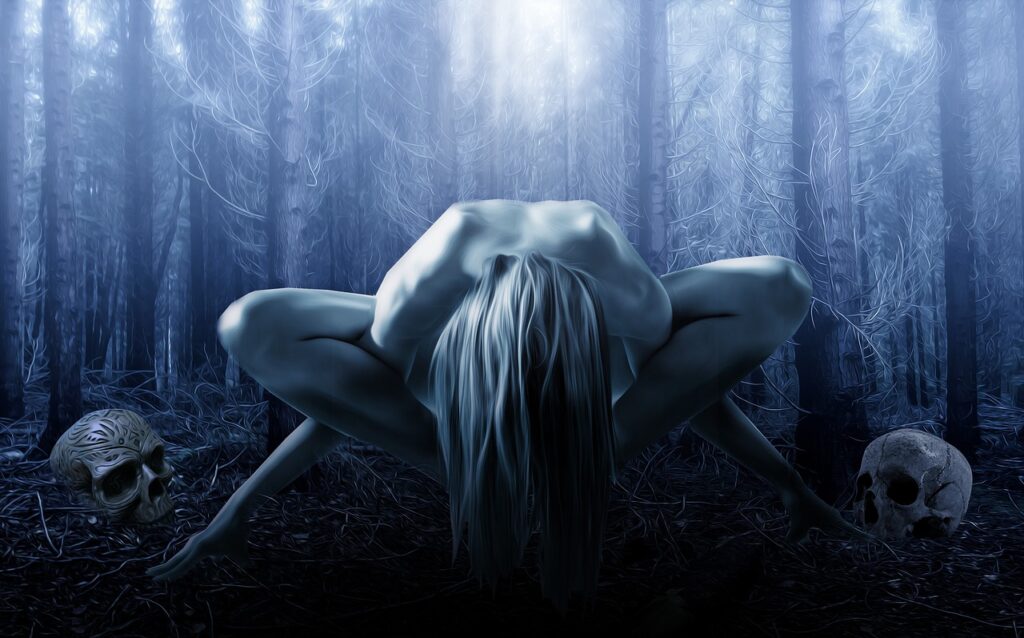
Choosing Your Patron: A Guide to Warlock Subclasses
Warlocks are a unique class in D&D 5th Edition, drawing their powers not from study or innate abilities but from powerful beings known as patrons. These patrons are not simply sources of magic but entities from other planes of existence that Warlocks make a pact with in exchange for magical powers, which not only mechanically include access to shared Warlock spells and Invocations but also often include specific spells or traits that are shaped by the nature of the Patron themselves.
Playing a 5E Warlock well means understanding this underlying role between Patron and Warlock deeply, as well as knowing what Patrons are and how they are involved with Warlocks.
Patrons come in all shapes and sizes, from ancient dragons to powerful celestial beings, and each offers a distinct set of abilities and spells to their Warlock. They are often enigmatic and otherworldly, with motives that are not always clear to mortal minds.
But why do Warlocks make pacts with these powerful entities? The answer is simple: power.
Warlocks seek to gain an edge in the world, whether for personal gain or to achieve some grander purpose. In exchange for their loyalty, patrons grant Warlocks access to powerful spells, abilities, and even boons – forming Warlocks into various subclasses. It is fully possible for a warlock to be evil and chaotic or good and lawful, it all depends on the patrons.
Reasons for agreeing to serve a patron can come from completely different back stories and influences but it comes back to the need for power. The purpose just leads to that need, which leads to a mortal willing to make a deal with a Patron. And thus you have warlocks.
Each Patron has unique lore, abilities, and even personality, allowing players to immerse themselves in their chosen subclass fully.
A warlock’s pact with otherworldly beings is comparable to a master and apprentice relationship. Unlike clerics, warlocks do not typically serve gods and may pledge themselves to entities such as powerful demons, ancient fey, or eldritch beings from other planes.
Warlocks gain access to a range of magical abilities through this pact, from the power to alter their own being to the mastery of potent spells. In addition to their magical powers, warlocks are also skilled in hand-to-hand combat and comfortable with light armor and simple weapons.
Page 105 in the 5th Edition Players Handbook
Now that you understand the meaning behind the word “Patrons,” let’s explore the nine Warlock Patrons available in D&D 5th Edition, providing tips and insights to help you make the right choice and unleash your full potential as a Warlock. From the demonic might of The Fiend to the eldritch mysteries of The Great Old One, each Patron offers its own rewards and dangers.
5E Player’s Handbook: Fiend, Archfey, And The Great Old One
First up are the three patrons offered in the D&D 5th Edition Player’s Handbook: The Fiend, Archfey, and Great Old One. You can tell the writers enjoyed this one as they are some of the most interesting patrons with a great variety between the three, even after additional books with more excellent patrons (and sub-classes) were released.
Players can introduce their characters to patrons in many ways. For example:
- A warlock may seek out a Fiendish patron to gain power and revenge against their enemies
- An Archfey may choose a warlock as their servant to fulfill a quest or protect their Fey Realm or even just for chaotic amusement
- A Great Old One may contact a warlock through dreams or visions, offering knowledge and secrets in exchange for service
Each of these patrons has unique characteristics and allows players to explore different types of playstyles and creative subclasses, meaning even the same party can have two warlocks who have some similar spells but outside of Eldritch blast play completely differently in spell choices and attitudes.
The Fiend
The Fiend embodies the forces of evil and destruction. Warlocks who make a pact with Fiends gain access to hellish magic, such as fireball, scorching ray, and command. They also gain features that allow them to deal extra damage to their enemies, resist fire damage, and even return from death, earning themselves the title of the subclass: Fiend Warlock.
Fiendish Patrons may include archdevils, demons lords, or other mighty conquerors of the Lower and Outer Planes of the Great Wheel (nine levels of hell), such as devils, archfiends, pit fiends, balors, or even yugoloths.
Some classic examples of Fiendish Patrons are:
Fiend warlocks are suited for players who enjoy dishing damage and being formidable in combat. A lust for power, revenge, or domination often drives warlocks who serve a Fiend. They may seek to spread chaos and corruption in the world or to further the agenda of their Patron who is raising corruptive forces to go against those stopping their plans on the material plane.
This could involve an obvious one like stopping the King’s Men from wiping out local cults dedicated to your patron or a hidden form of him, or going against Clerics whom unbeknownst to you (or maybe even them) their Temple Leadership has been corrupted and are actually (un)knowingly pushing the agenda of a competing Fiend Lord.
Reasons why players may want to choose the Fiend as their Patron:
- Fiendish warlocks gain access to powerful spells and abilities that allow them to damage their enemies heavily (Hurl Through Hell is insane and awesome, IMO).
- The Fiend offers an intriguing roleplaying opportunity, allowing players to explore their darker side and delve into evil, temptation, and corruption themes.
- Fiendish Patrons may offer their followers promises of wealth, fame, or immortality, tempting players with great rewards for their loyalty.
When choosing The Fiend patron, players should be aware of the following:
- Players who choose the Fiend as their Patron may struggle to fit in with more heroic or altruistic party members due to their darker tendencies and the potential for evil acts.
- Depending on the specific Fiendish Patron chosen, players may face opposition or outright hostility from certain factions or groups within the campaign world.
- While the promises of wealth, power, and immortality may be tempting, players should be aware that there may be steep costs or consequences associated with serving a Fiend, whether through the pact itself or through the actions they take on their Patron’s behalf.
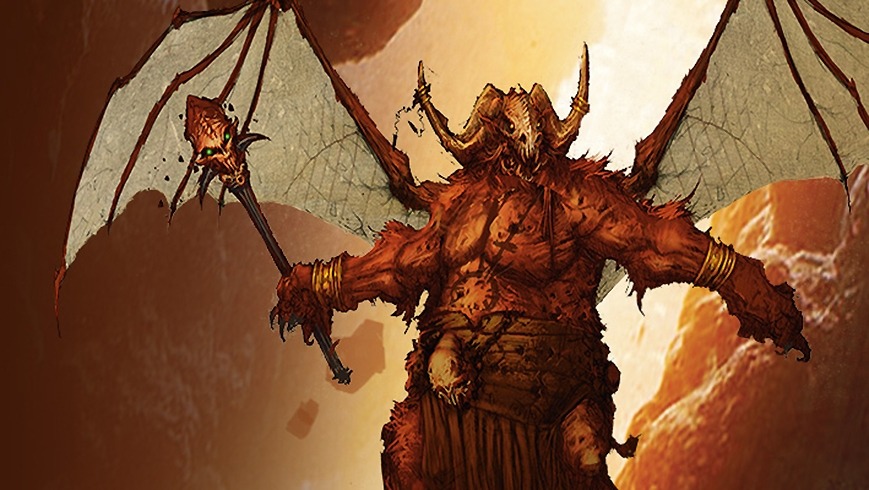
The Archfey
The Archfey represents the forces of Nature and the magic of the Feywild. Warlocks who make a pact with the Archfey gain access to fey magic, such as charm person, faerie fire, and misty step. Other than gaining features that allow them to charm their enemies, they also gain resistance to being charmed or frightened and the ability to teleport short distances.
Archfey Patrons may include powerful fey lords and ladies or other creatures of the Feywild, such as satyrs, dryads, or pixies. The Fey are chaotic and mysterious at the best of time an their logic can be nearly impossible to decipher by those used to logic and order on the Material Plane, making them a fascinating patron because of how alien their world is compared to even the fantastical worlds of D&D most of us are used to.
Some examples of Archfey Patrons are:
Archfey warlocks are suited for players who enjoy using their charms and magic to deceive and avoid danger. Trickery is a tool they love, and a little charisma and chaos never hurt anyone. Most often, Warlocks who serve an Archfey value beauty, freedom, and artistic expression. They may be tasked with protecting the balance of Nature or the whims of their Patron or simply enjoy the joys and pleasures of the Feywild.
They might be erratic, flighty, a bit strange, but they are undeniably a powerful ally to have on your side.
Reasons why players may want to choose the Archfey as their Patron:
- Archfey warlocks gain access to spells and abilities that allow them to charm, confuse, and manipulate others.
- The Archfey offers a unique roleplaying opportunity, allowing players to explore the mysterious and whimsical world of the Feywild and interact with a wide variety of fey creatures.
- Archfey Patrons may also offer their followers promises of beauty, artistic inspiration, or freedom, tempting players with a different kind of reward for their loyalty.
- Getting an improved Misty Step is an incredible boon for any player, much less a Warlock.
When choosing The Archfey Patron, players should be aware of the following:
- Warlocks who choose the Archfey as their Patron may find themselves dealing with mercurial or unpredictable behavior from their Patron and navigating complex rules and etiquette associated with coping with fey creatures.
- Depending on the specific Archfey Patron chosen, players may find themselves drawn into convoluted fey politics and rivalries or facing dangers associated with the faerie realm.
- Players who choose the Archfey may find that their Patron’s whims and desires conflict with their own goals or those of their party members, potentially leading to difficult decisions or moral quandaries.

The Great Old One
One of my favorite patrons available to Warlock player characters in 5E, The Great Old One embodies the forces of cosmic horror and the unknown. If you make a pact with a Great Old One, you’ll gain access to eldritch magic, such as detecting thoughts, confusion, and dominating monsters. They also gain features that allow them to telepathically communicate, read thoughts, and even cause madness in their enemies.
Great Old One Patrons may include ancient and otherworldly entities, or even mysterious forces from beyond the stars, such as the Far Realm or the Shadowfell. They can be forgotten horrors banished by the gods, entities existing between the planes, or even creatures older than the gods themselves.
There’s a lot to work with when it comes to the Old Ones and while Lovecraftian cosmic horror comes to mind first, there are many forms that a Great Old One can take.
Some examples of Great Old One Patrons are:
- Cthulhu (Also use Sany Petersen’s guide on Cthulhu Mythos)
- Hastur
- Nyarlathotep
- Yog-Sothoth
- Dendar, the Night Serpent
- Azathoth, the Blind Idiot God
Great Old One Warlocks are suited for players who enjoy using their intelligence and madness to manipulate and terrify their enemies. Warlocks who serve this Patron often seek knowledge, power, or enlightenment beyond the boundaries of sanity. They may be driven by curiosity, madness, or even a desire to save the world from a greater threat.
Reasons why players may want to choose the Great Old One as their Patron:
- Great Old One warlocks gain access to spells and abilities that allow them to manipulate the minds and wills of their enemies and even bend reality to their will.
- This Patron offers a unique roleplaying opportunity, allowing players to explore the themes of cosmic horror, madness, and the unknown and interact with mysterious and otherworldly beings.
- Great Old One Patrons may offer their followers promises of forbidden knowledge, enlightenment, or even salvation, tempting players with the ultimate reward for their loyalty.
When serving The Great Old One, players should be aware of the following:
- Choosing a Great Old One as a patron may lead to isolation or ostracism from other characters in the game world due to the incomprehensible or alien Nature of the Warlock’s Patron.
- Depending on the specific Great Old One Patron chosen, players may find themselves plagued by unsettling visions or experiences or at risk of being driven mad by exposure to their Patron’s eldritch power.
- Warlocks who make pacts with a Great Old One may face opposition from various forces seeking to contain or control these beings’ dangerous knowledge and power.
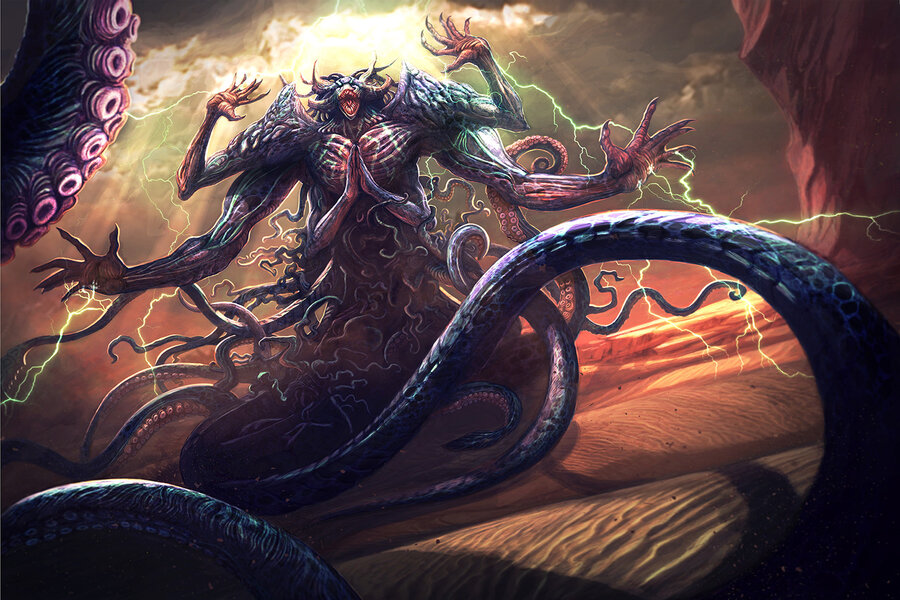
Sword Coast Adventurer’s Guide: The Undying
Next up is the Undying Patron, offered in the Sword Coast Adventurer’s Guide on page 139. This Patron represents those who have attained immortality through undeath, divine intervention, or a pact with powerful entities – possibly even entities who were once mortal warlocks who made their own deals.
There are various methods to make a pact with an Undying Patron.
- For example, players can be introduced and make a pact with Undying patrons by exploring ancient tombs or crypts containing the Patron’s remains or relics of choice, making a sacrifice to the Patron, or even contacting a follower of the Patron to act as a mediator or recruiter.
Undying warlocks gain features that allow them to resist damage, heal themselves and their allies, and communicate with undead creatures. They also gain access to spells enabling them to manipulate life force and death, such as false life, speak with dead, and the circle of death.
Undying Patrons may include powerful undead beings, such as liches, vampires, and mummies, or divine figures, such as gods of death, fate, or rebirth. Some examples of Undying Patrons are:
- Acererak
- Lolth
- Kelemvor
- Mystra
- Osiris
- Raven Queen (depending on how the DM plays her place, or gray area lack thereof, in the Pantheon)
- Talos
- Vecna
Undying warlocks are suited for players who enjoy playing with themes of death, undeath, and the supernatural. They can also be great support characters, as their abilities allow them to heal themselves and their allies and resist damage.
Reasons why players may want to choose the Undying as their Patron:
- Undying warlocks gain access to spells and abilities that allow them to manipulate life and death, making them unique and versatile characters.
- This Patron offers an intriguing roleplaying opportunity, allowing players to explore themes of immortality, death, and the paranormal.
- Undying Patrons may offer their followers promises of eternal life or power, tempting players with great rewards for their loyalty.
When choosing the Undying Patron, players should be aware of the following:
- Players who choose the Undying as their Patron may struggle to fit in with more traditional or religious party members due to their Undead Nature or association with death.
- Some top-tier abilities don’t bode well within some campaigns, such as Undying Nature (not required to eat or drink) and Indestructible life (a great option, but only available at level 14).
- The Undying Patron does not offer much offensive power compared to other patrons. Most of the spells and features focus on survival and utility, which may not suit players who want to deal more damage or have more combat options.
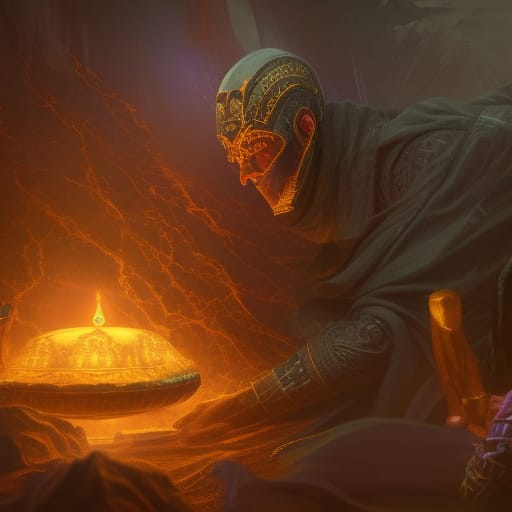
Xanathar’s Guide To Everything: The Hexblade And Celestial
Two of the most popular Warlock patrons are introduced in the Xanathar’s Guide To Everything on pages 54 & 55: the Hexblade and the Celestial. This sourcebook provides additional options for players and Dungeon Masters to expand upon the base classes and races in the Player’s Handbook, including new subclasses and spells.
As with other Warlock patrons, players can make a pact with the Hexblade or Celestial by encountering them in-game or through roleplaying. For example:
- A player may come across a sentient weapon offering them a deal, or they may contact an otherworldly being during their travels.
- Alternatively, players may have a pre-existing relationship with their Patron, such as being born into a family with ties to a particular deity.
The Hexblade
The Hexblade Patron is a mysterious being from the Shadowfell – a might that manifests in sentient magical weapons engraved from shadow. Warlocks who make a pact with this Patron gain access to incredible shadowy magic, such as shield, branding smite, and cone of cold – and are among the most favorable subclasses amongst players venturing into the Warlock classes.
They also gain features that allow them to wield their pact weapon with skill, curse their enemies, and channel the power of their Patron.
Hexblade Patrons may include powerful weapons of legend, such as swords forged by gods, relics of ancient empires, or artifacts of unknown origin. Some examples of Hexblade Patrons are:
Hexblade warlocks are driven by a desire for power, glory, or revenge, and they wield their Patron’s magic and steel with deadly skill and are suited for players who enjoy playing versatile and aggressive characters.
They can fight in melee or range battles, using their charisma to fuel their attacks and spells. They can also curse their enemies with hexes, making them more vulnerable to their strikes.
Finally, they may seek to uncover the secrets of their Patron’s origin or wield their weapon against their foes.
Reasons why players may want to choose the Hexblade as their Patron:
- Hexblade warlocks can create a pact weapon that suits their style and preference and can change its form as they wish. They can also bond with a magic weapon they find and use it as their pact weapon, gaining its benefits and features.
- This subclass can channel their Patron’s power through their weapon, making them more effective in melee combat. They can also use their charisma for their weapon attacks and damage, making them less dependent on other ability scores.
- Hexblade warlocks can also curse their enemies with hexes, making them more vulnerable to their attacks and spells. They can also impose various effects on their cursed foes, such as reducing their speed, lowering their defenses, or preventing them from healing.
When choosing the Hexblade Patron, players should be aware of the following:
- Hexblade warlocks have a limited list of concentration spells competing with each other. Many of the spells are also defensive or smiting, which offers little versatility or utility.
- Hexblade warlocks have a vague and mysterious patron that may not appeal to some players who prefer a more defined or personal relationship with their Patron. The Patron may also have a hidden or sinister agenda that may conflict with the Warlock’s goals or morals.
- Hexblade warlocks are known for being overpowered or cheesy, especially when multi-classed with other classes that benefit from charisma-based attacks. Some players or DMs may dislike or ban this subclass for being too optimized or unbalanced.
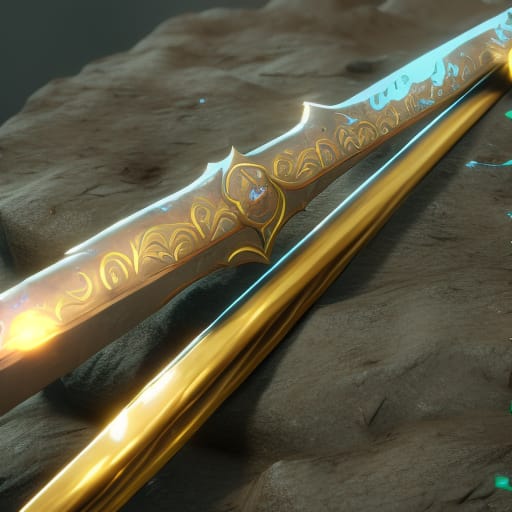
The Celestial
The Celestial Patron is a benevolent being of the Upper Planes – a force that manifests in angels, archons, eladrin, or unicorns. Warlocks who make a pact with Celestials gain access to holy magic, such as cure wounds, lesser restoration, and revivify. Besides gaining features that allow them to heal themselves and their allies, they also gain resistance to radiant damage and unleash radiant fire.
Celestial Patrons may include good-aligned beings of the Upper Planes, such as good-aligned deities or emissaries. This can be a bit strange as it creates some interesting situations where you may have a Cleric of Bahamut, a Paladin or Bahamut, and angels serving the Dragon God creating Celestial Warlocks.
This can create some muddling when it comes to what a DM will or will not allow, so talk to them about this class. Some examples of Celestial patrons can include:
- An old Unicorn
- Ancient Empyrean
- Solar
- Ki-rin
- Archons
- Angels
Celestial adds an exciting twist for warlocks and is suited for players who enjoy playing supportive and philanthropic roles in combat. A sense of duty, compassion, or faith often drives warlocks who serve a Celestial, and they may seek to spread goodness and light in the world or to further the agenda of their Patron.
Reasons why players may want to choose the Celestial as their Patron:
- By selecting this Patron, players can feel a connection to the Upper Planes and their Patron, experience a touch of the divine, and really change up the flavor of Warlocks that are usually played. They may also receive visions, dreams, or signs that reveal secrets or mysteries of the multiverse.
- Celestial warlocks can stand against the forces of evil and darkness, using their light and fire magic to smite their foes. They may also have a personal or moral reason to oppose fiends, undead, or cultists.
- Celestial warlocks can benefit from their Patron’s guidance, protection, or salvation, receiving rewards for their loyalty and service. They may also have a close or distant relationship with their Patron, who may be a benevolent or demanding entity.
When choosing the Celestial Patron, players should be aware of the following:
- Celestial warlocks have a limited spell list that primarily consists of light and fire spells that may not be effective against some enemies. Many of the spells are also concentration spells that compete with each other and may be easily disrupted.
- Going with this Patron involves having a high moral standard that may not suit some players who prefer a more flexible or pragmatic approach. They may also conflict with their patrons or other party members over ethical issues or decisions.
- Some players may find that a different class entirely may suit this supportive role better.

Tasha’s Cauldron Of Everything: The Fathomless And The Genie
Two of the most recent Warlock patrons are introduced in Tasha’s Cauldron of Everything on pages 72 and 73: the Fathomless and the Genie. This sourcebook provides new ways for players and Dungeon Masters to customize their characters and campaigns with new subclasses and spells.
Players can make a pact with the Fathomless or Genie by encountering them in-game or through roleplaying. For example:
- A player may come across a mysterious relic that contains a genie offering them a deal, or they may inherit a family heirloom that grants them access to a genie’s power.
- Alternatively, players may have a pre-existing relationship with their Patron, such as being descended from a genie or having a connection to the sea.
The Fathomless and the Genie are two very different patrons that offer distinct benefits and challenges for warlocks.
The Fathomless Patron is a deep sea being that grants aquatic magic and abilities. At the same time, the Genie patron is a powerful entity from one of the elemental planes that give wishes and elemental magic. Both patrons offer intriguing roleplaying opportunities and unique features for warlocks who seek to explore new realms and wield new powers.
The Fathomless
The Fathomless Patron is a mysterious being of the deep sea – a force that manifests in krakens, leviathans, ancient sea hags, or aboleths. Warlocks who make a pact with the Fathomless gain access to aquatic magic, such as create or destroy water, a gust of wind, and sleet storms.
They also gain features that allow them to summon a tentacle of the deeps, breathe underwater, communicate with sea creatures, and unleash thunderous fury.
As you know, Fathomless Patrons may include powerful creatures of the ocean depths; they may also be primordial entities of water or storm that seek to influence mortal affairs, such as Umberlee or Olhydra. Some examples of Fathomless Patrons are:
Fathomless warlocks are suited for players who enjoy being adaptable and mysterious in combat. A curiosity for the unknown, a reverence for the sea, or a thirst for adventure often drives warlocks who serve a Fathomless and may seek to explore the ocean’s secrets or wield their Patron’s power against their enemies.
What makes the Fathomless unique?
- Fathomless warlocks gain access to spells and abilities that allow them to manipulate water and weather, making them versatile and unpredictable characters.
- Fathomless warlocks can summon a spectral tentacle that can attack and slow down their foes, giving them an edge in combat.
- Fathomless warlocks can breathe underwater and communicate with aquatic creatures, opening up new possibilities for exploration and interaction.
What should you consider before choosing the Fathomless?
- Fathomless warlocks may struggle to fit in with more land-based or civilized party members due to their Aquatic Nature and potentially “alien” motives.
- This subclass may not favor campaign settings that find the player far away from any water source or in situations where the player can not use the element.
- Like most other Patrons, Fathomless warlocks may have hidden costs or consequences associated with serving a Fathomless, whether through the pact itself or through the actions they take on their Patron’s behalf.

The Genie
The Genie patron is a powerful entity from one of the elemental planes – a force that manifests in dao, djinni, efreeti, or marid. Warlocks who make a pact with a Genie gain access to elemental magic, such as thunderwave, scorching ray, and cone of cold. They also gain features that allow them to enter their Patron’s vessel, make limited wishes, and travel across planes.
Genie Patrons may include noble genies who rule vast fiefs on the elemental planes, greatly influencing lesser genies and elemental creatures. They may also be ancient or legendary genies who have accumulated great wealth and power over the ages. Some examples of Genie Patrons are:
Genie warlocks are suited for players who enjoy being versatile and charismatic in combat. A desire for wealth, fame, or knowledge often drives warlocks who serve a Genie. They may also seek to fulfill their Patron’s wishes or benefit from their generosity.
What makes The Genie Patron unique?
- Genie warlocks gain access to spells and abilities that allow them to manipulate different elements, depending on their Patron’s kind: earth, air, fire, or water.
- Once a pact is made, Warlocks can enter their Patron’s vessel, a magical object that grants them a measure of the Genie’s power and serves as a safe haven.
- This subclass is unique because Genie Warlocks can make limited wishes, granting them a degree of reality-altering power.
What should you consider before choosing the Genie?
- Warlocks of this Patron may struggle to fit in with more humble or altruistic party members due to their extravagant lifestyle and potentially greedy motives.
- Genie warlocks may face challenges or dangers from those who envy or covet their Patron’s vessel or power.
- Warlocks may have steep expectations or obligations associated with serving a Genie, whether through the pact itself or the wishes they make on their Patron’s behalf.

Van Richten’s Guide To Ravenloft: The Undead
One of the most recent Warlock patrons is introduced in Van Richten’s Guide to Ravenloft on page 30: the Undead. In this excellent sourcebook, players, and DMs will find new ways to customize their characters and campaigns with a horror theme, including new subclasses and spells.
When making contact with this Patron, players can make a pact with the Undead by encountering them in-game or through roleplaying. For example:
- A player may come across a tomb that contains an ancient lich offering them a deal, or they may be bitten by a vampire lord who grants them a portion of their power.
- Alternatively, players may have a pre-existing relationship with their Patron, such as being descended from an undead creature or having a fascination with death.
The Undead
The Undead patron is an ancient being that has transcended death and gained immense power over life and death. Warlocks who make a pact with the Undead gain access to necromantic magic, such as bane, blindness/deafness, and cloudkill. They also gain features that allow them to take on a fearsome form, explode their body, and project their spirit.
Undead Patrons may include powerful undead creatures that have defied death and amassed great knowledge and power over the ages. They may also be dark lords of Ravenloft who rule over domains of dread and terrorize their subjects.
Some examples of Undead Patrons are:
Undead warlocks are suited for players who enjoy being resilient and terrifying in combat. A hunger for power, knowledge, or revenge often drives warlocks who serve the Undead, as they may seek to learn the secrets of their Patron’s immortality or to unleash their Patron’s wrath upon their enemies.
What makes the Undead unique?
- Undead warlocks gain access to spells and abilities that allow them to inflict necrotic damage, combined with Pact of Blades, and you have a great alternative class to the Hexblade Patron to debilitate your foes, making them formidable and ruthless characters.
- Undead warlocks can transform into a dreadful form that grants them temporary hit points, immunity to fear, and the ability to frighten their enemies.
- Warlocks of this Patron can explode their body when they are reduced to 0 hit points, damaging nearby creatures and reviving themselves with 1 hit point.
What should you consider before choosing the Undead?
- The Undead patron is very similar to the Undying Patron from another sourcebook. Both give you access to many of the same spells and make you immune to some natural needs. The main difference is that the Undead Patron is better for melee combat, while the Undying Patron is better for supporting allies and fighting undead enemies.
- Undead Warlocks rely heavily on necrotic damage, which can be a big drawback depending on the foes you encounter in your campaign. Many creatures have resistance or immunity to necrotic damage, which can reduce your effectiveness. You must also be careful with Necrotic Husk, as the feature affects friends and foes.
- This Patron may not fit every player’s idea of character concept or playstyle. If you want to play a warlock with a different theme or focus, you may find the Undead Patron’s features too narrow or specific. You may also prefer a different patron who offers more variety or versatility.
How To Negotiate And Roleplay With Your Patron
One of the most significant and exciting aspects of playing a warlock is your relationship with your Patron. Your Patron is a powerful and mysterious entity that grants you arcane power in exchange for something.
But what is that something – how do you communicate with your Patron – And how do you balance your own goals and morals with your Patron’s agenda and expectations?
These are some of the questions that you will have to answer as you negotiate and roleplay with your Patron.
The truth: There is no one right way to do this, as every warlock-patron bond is unique and depends on the personality, background, and motivation of both parties. But to give you a general direction, here are some wide-ranging steps and tips that can help you create a dynamic and engaging warlock-patron relationship:
Choose Your Patron
The first step is determining which type of Patron you want to pact with. Many options are available in different sourcebooks, from the devilish Fiend to the restless Undead. Each Patron has a different theme, flavor, playstyle, and different benefits and drawbacks. You should choose a patron that suits your character concept and interests you as a player.
Establish Your Pact
The next step is determining how and why you made a pact with your Patron. There’s an example under each Patron on the idea of how to “contact” them. Still, this is where you can get creative and come up with a backstory that explains:
- How you met your Patron
- What they offered you
- What they asked for in return
- What are the terms and conditions of your agreement
I highly encourage you to work with your DM to flesh out these details and make them fit into the campaign setting and plot. You can also use examples from published material or novels for inspiration or even be inspired by excellent Youtube content!
Roleplay Your Relationship
The final step is to roleplay your relationship with your Patron throughout the game. It is where you can have fun and show off your character’s personality and choices. Depending on your Patron’s Nature and preference, you can communicate with your Patron through dreams, visions, signs, or direct contact.
You can also use your Patron as a source of information, guidance, or assistance, but be careful not to anger or disappoint them. You can also explore how your Patron affects your interactions with other characters, such as allies, enemies, or NPCs. You can also face challenges or conflicts that test your loyalty or morality as a warlock.
Finally, remember that your Patron is not just a source of power but also a character with their own goals, personality, and attitude.
They may be benevolent, selfish, evil, or anything in between. They may also be supportive, demanding, indifferent, manipulative, or have a clear agenda or hidden motive. Or maybe loyal to you or betray you at any moment. The key is to make your Patron exciting and memorable for yourself and others at the table.
Warlocks: Gotta Love Them, Right?
Warlocks are among the most favorable classes in D&D due to exceptional lore potential and for the Patrons to play a massive role in the campaign’s storyline. It’s always a great idea to understand each Patron and get a good feel for what they offer, what personalities would suit them, and how they would fit into your Warlocks profile both in and out of combat.
On that note, may your pact protect you!
Other DnD Articles You May Love
- DnD Damage Types
- Schools of Magic in D&D
- 5E Clerics Vs Paladins
- Complete DnD Crossbow Guide
- Warlocks Vs Wizards Vs Sorcerers
- Best 5E Feats for Warlocks

Proud to embrace the locally created moniker of “Corrupt Overlord” from one of the all time great Lords of Waterdeep runs, Shane is one member of the Assorted Meeples crew and will be hard at work creating awesome content for the website. He is a long-time player of board games, one time semi-professional poker player, and tends to run to the quirky or RPG side of things when it comes to playing video games. He loves tabletop roleplaying systems like Dungeons & Dragons, Pathfinder, Werewolf, Fate, and others, and not only has been a player but has run games as DM for years. You can find his other work in publications like Level Skip or Hobby Lark.
